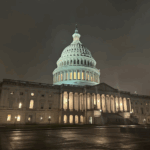
The Transportation Security Administration (TSA) is already resource constrained when it comes to helping the nation’s airports meet security requirements and it is only going to get worse, the agency’s top official said on Tuesday. The continuing resolution that is currently funding the federal government at fiscal year 2023 levels until early February 2024 “is going to be challenging for us as an agency,” TSA Administrator David Pekoske said at the annual American Association of Airport Executives Aviation Security Summit.…

 By
By 











